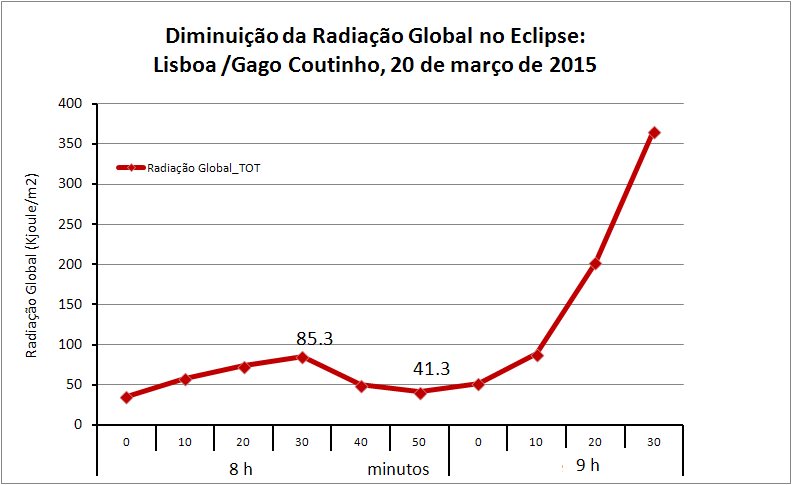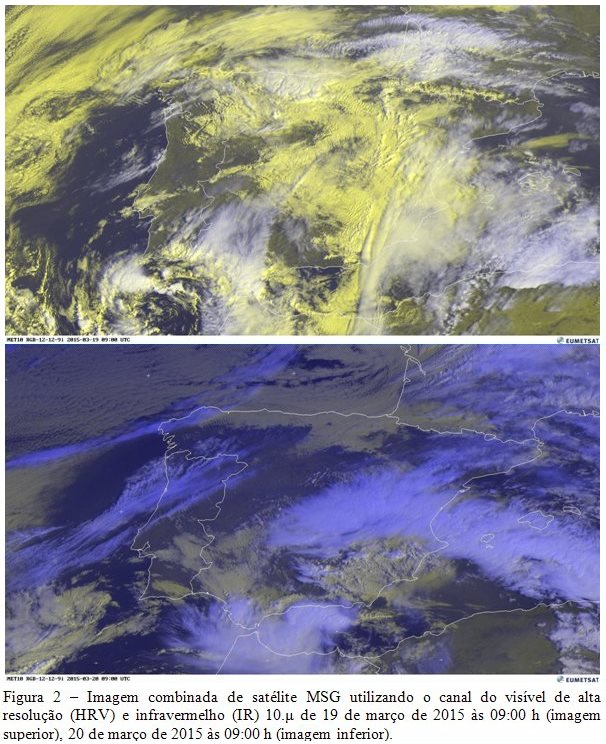
A decrease in global radiation measured at some stations in the national territory, in the period between 08 am and 09 am local time, was identified following the solar eclipse of Friday, March 20, announced the Portuguese Institute of the Sea and the Atmosphere.
Figure 1 shows an attenuation of global solar radiation measured at the meteorological station in Lisbon/Gago Coutinho between 08:30 am and 09 am.
This attenuation occurred at a time of day when radiation normally increases and on a day when there was cloudiness, with no significant changes in temperature evolution.

The difference in luminosity between the 19th and 20th of March at 9 am, caused by the eclipse, is illustrated in Figure 2.
This Figure shows two satellite images that result from the combination of the high resolution visible (HRV) and 10.8 μ infrared channels of the Second Generation Meteosat (MSG) satellite.
Animation 1 presents a sequence of combined images from the MSG satellite based on the 0.6 μ, 0.8 μ and 1.6 μ channels, between 07:00 and 12:00 local time showing the evolution of the shadow caused by the eclipse in the North Atlantic, North Africa and Europe Western.
Click here to see the animation.


















Comments